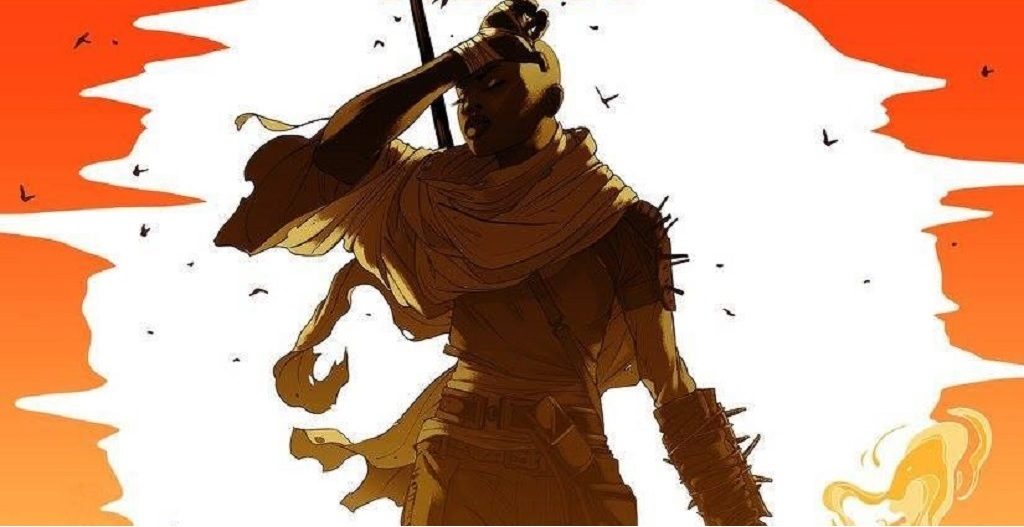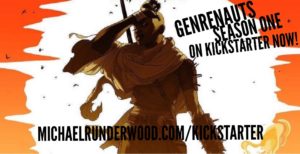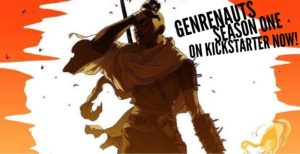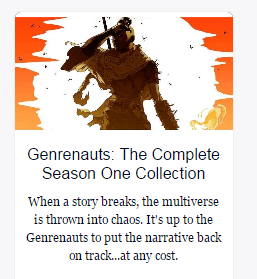Several things popped up in rapid succession that got me thinking. The first was this announcement regarding YouTube Red, the new ad-free paid tier of YouTube. The second was the news of a new Star Trek series, to be aired (almost?) exclusively on CBS All Access, a streaming service. And then, just as I was writing this post, Amazon announced Amazon Books – a Bricks & Mortar test store.
So now, I’m going to put on my digital media scholar hat once more and talk about some high-level stuff going on right now. Some pitfalls and pain points I see, as well as opportunities.
YouTube Red has been some time in the making. January of this year, musician Zoë Keating got a lot of shares and chatter with her post “What should I do about YouTube?” on this very topic. I see this move as part of an overall shift in the landscape toward more and more de-centralization of content, where 1st-party streaming systems and subscriptions replace once-agnostic content aggregation-esque systems like YouTube, Hulu, etc.
Here’s YouTube creator Hank Green discussing some of the ins and outs of this move.
I appreciate him spending the time to talk about the positives and negatives, avoiding a hard knee-jerk reaction. I’m worried about the independent creators who had found an equilibrium between Patreon, YouTube, and other venues who now have to pivot and adjust in a big way. It’s the way of life, but any logistical interruption costs creators money, because have to spend spend more of their time on admin and strategy rather than the actual creation.
And then, just hours later, I saw the news about the new Star Trek show, and that it was going to be almost exclusively available on CBS All Access, a paid streaming subscription which currently costs $5.99 a month.
It looks to me (and others, from what I’ve seen), that this is CBS positioning the new show as a Killer App for their streaming service, which I’d not heard of before today (I’m mostly out of the Media Criticism game day-to-day, thanks to having two other careers).
It’s potentially a very smart approach – and one that most of these proliferating paid services are following. HBO, Netflix, Hulu, Kindle Unlimited, all of them are bringing in or commissioning exclusive content to serve as Killer Apps for their individual services.
But here’s the thing about that proliferation – if every service has its own killer apps behind their pay walls, most consumers are very quickly going to max out on the $ they can or choose to pay for these services.
Consumer Side
An example – I have a steady, middle-class day job and I have a writing career. I’m married to someone who also has a steady job, and we have no kids. So we have more disposable income than a lot of US families. Between us, we pay for Netflix, Hulu, and High-speed internet. I get my razors on a subscription, I subscribe to a fiction serial (Bookburners), I’ve been an intermittent subscriber to Oyster and Scribd, as well as supporting a half-dozen creators on Patreon and intermittent subscriptions to broadcasters on Twitch.tv. As a household, we’re probably in the top quartile of subscription service users in the US. And I’m very much at the point of ‘Okay, that’s all I can do’ when it comes to subscription services. If I add one at this point, it probably involves dropping another.
And there are *so many* of them these days:
Twitch, YouTube, Netflix, Hulu, Crunchyroll, HBO Now, CBS Access, Spotify, Apple Music, Kindle Unlimited, Scribd, Amazon Prime, etc.
And that’s not even counting subscription boxes (L00tCrate, etc.) and subscription services outside of entertainment, like Harry’s, Blue Apron, StitchFix, etc.
Economic recovery in the US is happening, but it’s slow, and it’s accompanied by wage stagnation and income inequality (I can’t speak well to the economic situation elsewhere, so I won’t). So the % of people in the US that can afford numerous subscription services without seriously re-framing their budget is still not too large, from what I can tell. Whether this is part of an overall paradigm shift in how people budget and consume content is a different discussion (there are too many ways this could go – I have to focus).
Creator Side
Switching hats now – what does this look like on the creator side of the equation?
I see this proliferation of paid/gated services as a double-edged facet of the overall creative & commercial ecosystem. There are opportunities, but they’re potentially fraught.
Here’s what I see as the dominant progression for a creator trying to make money from their work (visual art, music, prose, comics, video, etc.)
Level 1 – Start small, give stuff away for free, sell some stuff. At Level 1, a creator is almost totally reliant on big systems, for both discovery and fulfillment/delivery. Basically no one knows who they are, so they join larger infrastructures and services to get the word out about their material through algorithmic and organic discovery.
Level 2 – Building Audience & Relationships — At this level, it becomes viable to sell some merch (T-shirts, mugs, stickers, patches, etc. Here, a creator can bring dedicated fans onto a growing mailing list. This level enables direct sales and stronger performance on retail sites, but the creator may still be largely dependent for discovery-enabled growth and a lot of fulfillment/delivery
Level 3 – Big Creators – Here, creators have a dedicated audience large enough they can get a living wage directly from their base, either totally direct or through Patreon/Kickstarter. Maybe they supplement their income speaking/appearance fees etc., being large enough that they are in demand not just as creators, but as entrepreneurs/thought leaders in their field. They may still use large systems, but if they do, they do so from a far stronger position – they are less dependent on any given system, since their base is strong, a base that is specific and mobilized, not platform-dependent.
This system is reductive, and by applying it broadly across media, I lose some nuance. Musicians can tour and get money from in-person appearances and sell merch there – novelists and poets largely cannot. Visual artists can sell commissions at conventions for solid income, writers have less opportunities in such situations. Etc.
Some take the pure indie path and are less reliant on the bigger systems, but then don’t have access to their discovery engine.
As the landscape moves toward more gated content, more push for exclusives as killer apps, more and more places to publish and publicize, creators have to have our eyes wide frakking open as we consider every new platform, every new distributor agreement, every new book deal, and so on.
Because things are moving fast, and these big platforms are only allies for as long as we’re useful to them. ACX changed its payout terms last February, and because ACX was the only real game in their town (self-publishing audiobook service), creators were forced to sign the new terms or walk from that service entirely. It’s the same type of choice YouTube creators have been forced into, though with notable differences (ACX was a flat-out rate cut, YouTube might come with additional payment, but requires more opt-in and cuts off other options). Any creator that relies on a single or small # of services/sites/retailers for a large % of their business is vulnerable to disruption, as Chuck says in the link re: ACX.
Anytime one of these big companies makes a shift, it causes huge ripples, and creators, especially those of us reliant on platforms for fulfillment, discovery, or other services/opportunities they offer have to roll with the changing tides.
In my opinion, creators right now have more to fear from Monopsonies and monopsonic behavior, than monopolies. Since so many creators are currently beholden to retailers and/or content services (writers and Amazon/B&N/Kobo/iTunes/Physical Bookstores, musicians and iTunes/Spotify/Pandora), if a creator wants to retail their work but doesn’t have enough reach/audience on their own, they use a seller/vendor. But if there are few enough vendors in their world, and those limited vendors exhibit monopsonic behavior, the result tends to be a major squeeze on the creators.
Paradoxically, the creators are the only reason the monopsonists can survive – if a majority of creators pulled out of monopsonic vendors, those vendors would collapse. But in the meantime, the lost income, the lost access could easily bankrupt a huge % of the creators pulling away from the monopsonist.
In a healthy market, there are a range of options, and creators can respond to a change of terms they dislike by removing their content from that platform. But for most video creators, removing everything from YouTube stands to present a loss of a huge % of their access and income, just as a prose writer would stand to lose a huge % of their access and income if they decided to not sell through Amazon.
Monopsonic behavior also impacts larger creator groups, like publishers – if one retailer or wholesaler gets too strong, it can create problems. It’s the WalMart problem. Wal-Mart pushes down prices, then makes up their $ in volume and by demanding better terms from their vendors, The vendors (publishers, manufacturers, etc.) then get to choose – pull out of the single-largest physical retailer, or accept the terms. Because individually, Wal-Mart doesn’t need most vendors. They need a plurality or majority, but as long as the selection adds up, individual vendors can come and go.
So when you’re one of those vendors, one of those creators, you end up in a really terrible situation. And that worries me. I want a healthy marketplace, where creators (authors, musicians, etc.) and the publishers/labels/etc that work with them have options, have recourse for if/when terms change in a way that becomes untenable.
The sky is not falling. But I will continue to point out rain clouds when I see them forming. Because then the smart folks can put out buckets and save on the water bill, or pull the lawn furniture inside before the storm breaks.
I’ll stop there before torturing the metaphor any further.
What do you all think about these streaming service moves – YouTube Red, and Star Trek on CBS All Access?
—
Mike’s latest book is Hexomancy, the fourth Ree Reyes urban fantasy. Geek magic squares off against a quartet of fate witches hell-bent on revenge.
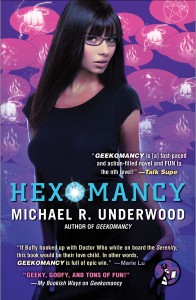


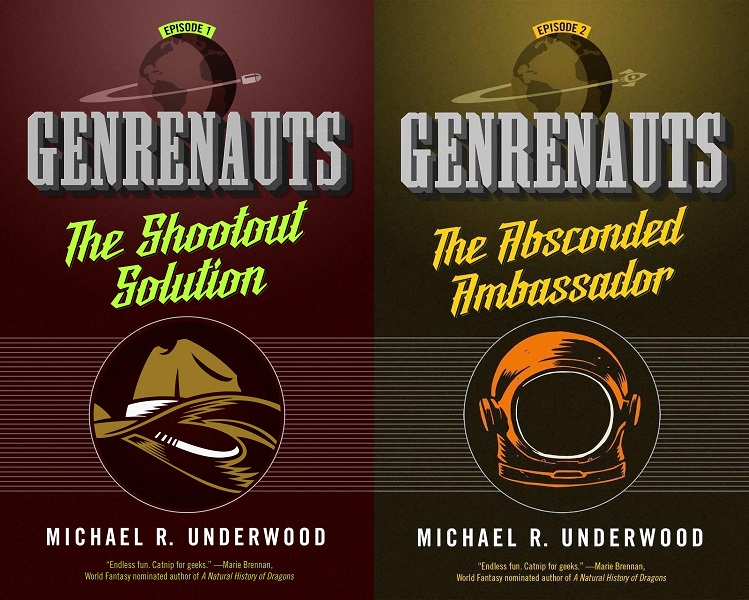
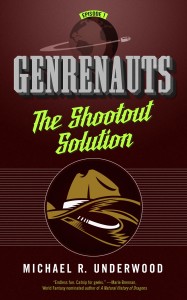


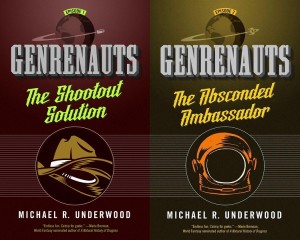

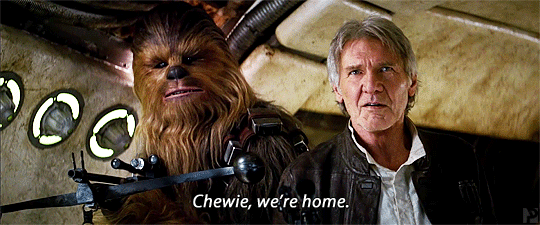


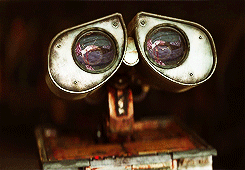
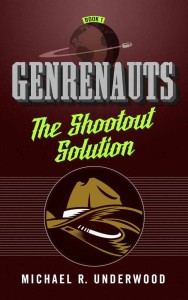
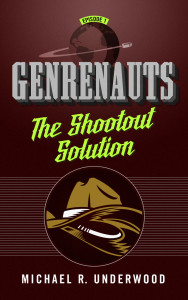



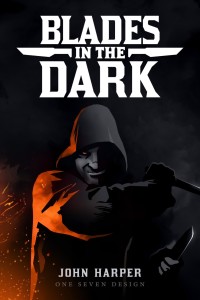
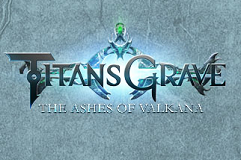


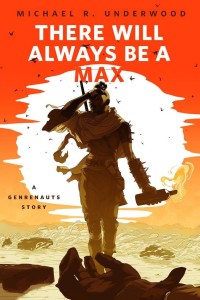
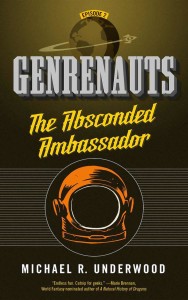
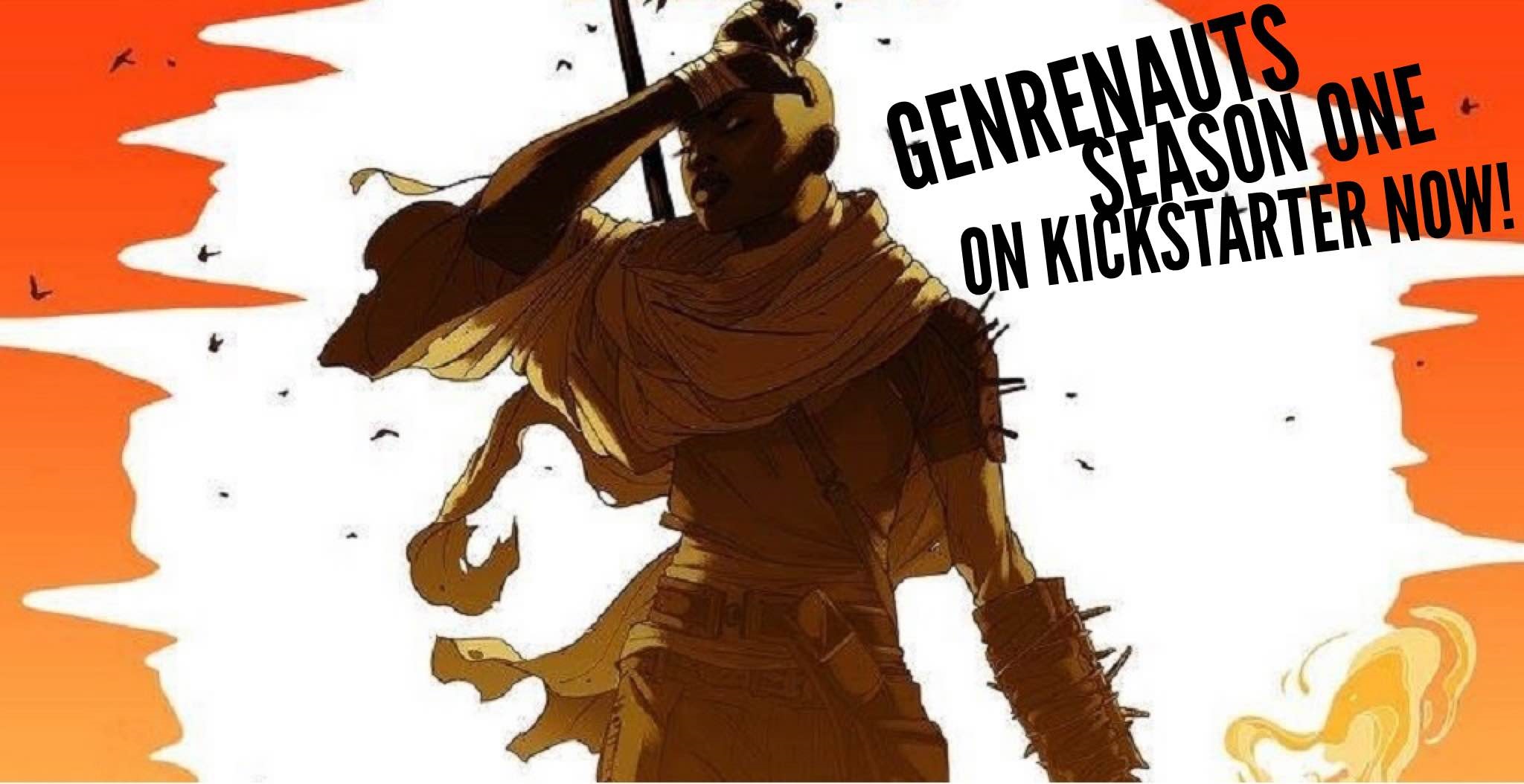
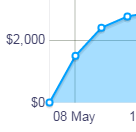
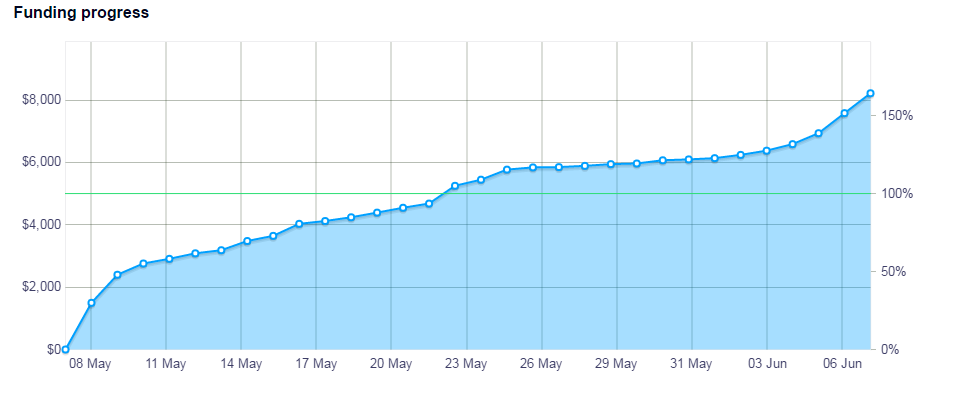 Around the 16th of May, things slowed down some. An then after the 26th of May, the campaign really slows down, getting less than 5 new backers a day for over a week. I was still putting out updates, hitting blogs and podcasts, but not at the same rate, and even so, we were still very far from our first stretch goal (more on that later).
Around the 16th of May, things slowed down some. An then after the 26th of May, the campaign really slows down, getting less than 5 new backers a day for over a week. I was still putting out updates, hitting blogs and podcasts, but not at the same rate, and even so, we were still very far from our first stretch goal (more on that later).